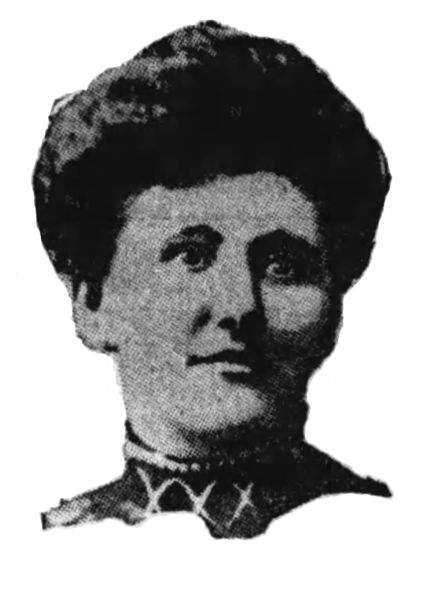Mary E. Holland
Originally published in The Rock River Times.
When local farmer John McDougall knocked on the door of Margaret Grippen’s home on April 29, 1909, he couldn’t know that he was about to be swept up in the worst crime ever seen in the small town of Winnebago, Illinois.
Margaret Grippen was a 60-year-old widow and had lived in Winnebago with her husband, Demus for many years. The couple were farmers and when Demus died in 1895, he left Margaret in good financial standing. The newspapers of the day told of Margaret’s fears that something terrible would happen to her. Her house set near the both the railroad line and the interurban line and this caused the old lady concern.
The night that Margaret was murdered there was a fierce spring storm that kept all of her neighbors inside. The heavy rain and almost continuous thunder covered the sounds of her screams as she fought for her life.
Coroner McAllister was shocked at the damage that had been done to the elderly woman. By the condition of her body and the damage done to the inside of her home, he could state that Margaret had fought hard for her life on that stormy night..
The only real clue that was left by the killer was found on a glass chimney from a lantern. The lantern had been set on the floor by Margaret’s body and covered with one of the lady’s shawls in hopes that this would set a fire to the home. But that is not what happened. Some called it divine intervention when they discovered that the shawl had actually smothered the flame of the lantern. When the chimney was examined, authorities found three blood stained fingerprints.
Fingerprinting was just beginning to used in the country at this time. In 1904, one of the country’s only instructors was Detective John Kenneth Ferrier, an inspector at Londan’s New Scotland Yard. Ferrier was traveling the country and during 1904, he was demonstrating the art of fingerprinting at the World’s Fair in St.Louis. Two of his pupils were owners of the Holland Detective Agency in Chicago, Illinois. Phil and his wife Mary attended the Fair and met Ferrier. Fascinated by the science of fingerprinting, Mary decided to join Ferrier for classes.
This was extremely significant and unusual for this time period. Women were not usually allowed to take part in actual investigations. But Mary Holland was not your typical woman. She would eventually visit London and learn the fingerprint technique called the Henry Classification System. This system used a counting system for the whorls, ridges and loops to identify criminals. Authorities would obtain suspect’s fingerprints along with other identifying features and keep them on file. When a crime was committed and fingerprints were left, the authorities would spend hours comparing the known criminals prints to their samples.
At the time of the Grippen murder, Mary Holland was one of the top fingerprint experts in the country. In 1907, she was hired by the United States Navy as one of the first professional fingerprint trainers. Mary traveled all over the country to teach members of the Military and Police forces how to collect, store and compare fingerprints.
The fact that the authorities reached out to Mary Holland with the evidence from Margaret’s murder speaks to the dedication they had to solve this case. Mary began her work by comparing the collected prints to thousands of already processed fingerprints on file in Chicago.
She worked many long hard hours, bent over the prints with her magnifying glass but could find no match. Mary then sent the fingerprints on to other Police Bureaus in the midwest to see if they had a match in their files.
Mary became completely absorbed by Margaret’s murder and decided that she needed to see the crime scene for herself. Mary had been involved with murders before but she would later state that nothing she had witnessed up to that time could prepare her for the scene that she found in the Grippen home. The entire hallway was smeared with Margaret’s blood from the attack and more had been cast off the iron as the murderer brought it down on Margaret’s face time after time.
Mary Holland’s next move was to fingerprint the men of first Winnebago and then Rockford. m. She and the men that assisted her, gathered and compared the fingerprints of 1,000 men. The people who knew and loved the elderly victim were only too glad to give up their fingerprints to help catch the killer.
Unfortunately, though every avenue was explored, the owner of those three bloody fingerprints was never found. Mary Holland worked this case to the best of her ability and the fact that she didn’t solve it, never left her. She would go on to consult with authorities in some of the country’s worst crimes and put many criminals behind bars. This amazing woman who earned herself the name “the most famous woman detective of her time”, would remain haunted by Margaret’s murder. Her greatest fear in all her cases would be that if she did not catch these killers then someone else would die.
Margaret Grippen’s murder has never been solved. Mary E. Holland died on March 27,1915.
Copyright © 2022 Kathi Kresol, Haunted Rockford Events



